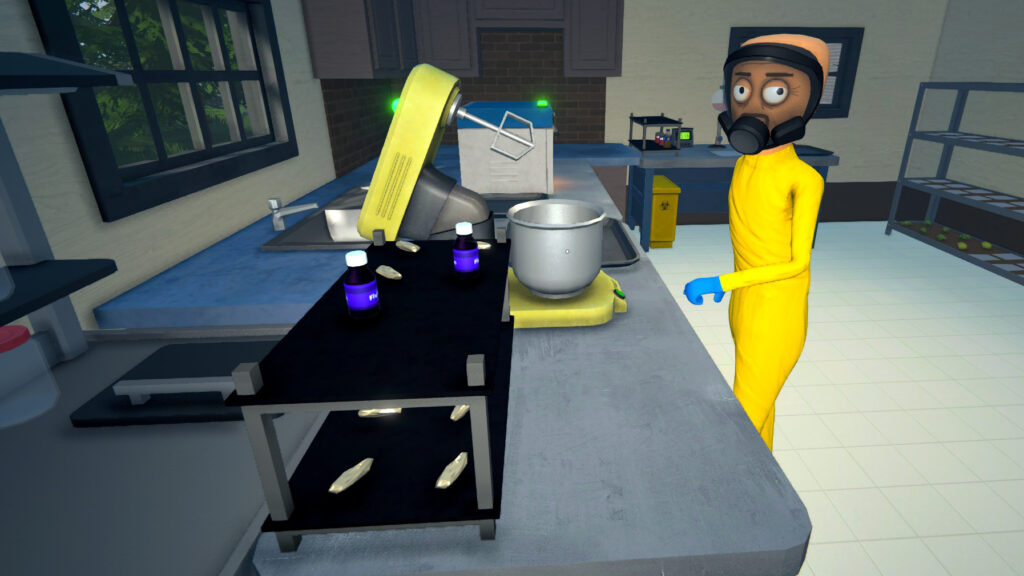Popular Now
In the high-stakes world of Schedule I: Cybernetic Command, players find themselves immersed in an intense, real-time strategy game set in a dystopian future where AI-driven corporations battle for dominance. While the game's interface, narrative complexity, and multiplayer mechanics are widely praised, one major issue continues to plague both casual and competitive players alike: the persistent resource imbalance during the mid-game phase. This problem, though subtle to new players, significantly skews strategic depth and undermines long-term tactical diversity. In this article, we take a detailed look at this issue, following its evolution, the community's response, developer actions, and potential solutions.

Understanding the Resource Structure in Schedule I
The resource economy in Cybernetic Command is driven by a triad system: Cryonite (for military tech), Neurogel (for cybernetic upgrades), and BioFlux (for unit spawning and maintenance). Each player starts with balanced access to these, but things shift drastically post early-game.
Players begin with evenly placed resource zones, encouraging exploration and early aggression. However, once players reach Tech Level 2—typically after 10-15 minutes—their resource income begins to diverge dramatically depending on their map position, AI faction, and the RNG-based resource node spawn.
The Issue With Randomized Node Replenishment
Replenishable resource nodes, especially Cryonite mines, often spawn unevenly. This RNG-based element means some players receive a sustained economic boost with little strategic input—giving them early access to Tier-3 units or AI network dominance.
Why It Matters
-
Breaks competitive fairness in ranked matches
-
Forces repetitive "resource rush" strategies
-
Invalidates tech-tree diversity in mid to late game
The Shift from Tactical Planning to Resource Scrambling
Initially, Schedule I was praised for requiring tactical base layouts and cybernetic unit synergy. However, as more players mastered early mechanics, it became clear that mid-game success correlated more with resource access than strategic skill.
By the 20-minute mark, players with access to more Cryonite and BioFlux tend to dominate. Even with superior micro and map control, players behind in income simply can’t afford the upkeep of advanced AI drones or neuro-linked commando squads.
Case Example: Tournament Analytics
In the 2025 Spring eSports League for Schedule I, over 70% of matches were won by the player with more mid-game Cryonite income, regardless of opening strategy or kill/death ratios. This led to outcry from prominent streamers and pros.
Patch 2.4: A Temporary Band-Aid
In response to community complaints, developers at Arcturus Games rolled out Patch 2.4, which aimed to normalize resource spawns and reduce RNG. While this helped somewhat, it didn’t address the core imbalance rooted in map asymmetry and AI node behaviors.
The update introduced a fallback mechanic: players with fewer mining zones would receive periodic "AI Subsidies"—automated drones that mined 10% faster. This, however, was exploitable by intentional base loss and didn't scale well in 3v3 modes.
Community Feedback
-
"Better than nothing, but still heavily favors map RNG" — Reddit user MechaRogue
-
"Artificial fixes don’t match the game’s strategic tone" — YouTuber WardenAI

The Role of Map Design in Reinforcing Imbalance
Cybernetic Command features 18 official multiplayer maps, but only 5 have symmetrical resource layouts. The rest favor one side or contain "choke-rich" zones that are easier to defend while gathering resources, creating systematic advantages.
Maps like Neural Uplift and Core Loop Delta have been heavily criticized for placing high-yield Cryonite nodes near corners, where early aggression is unlikely. Skilled players know how to exploit this and turtle until Tier-4 unlocks.
Proposed Fixes from the Community
-
Rotate symmetrical maps more frequently in ranked pool
-
Implement mirror-based resource layout algorithm
-
Add resource visibility to fog-of-war replays for better analysis
AI Faction Scaling and Unintended Consequences
Another layer of imbalance stems from how AI factions scale economically. The Corvid Protocol AI, for instance, gains a passive income bonus at Tech Level 3, giving them a +12 Cryonite/sec advantage—even without resource control.
This passive scaling not only rewards minimal effort but also trivializes defense-based strategies, as Corvid players can camp until an overwhelming wave is affordable without actively securing the map.
Developer Oversight or Design Philosophy?
Arcturus Games claims the AI passive bonuses "represent background data mining and drone optimization." While this fits the lore, it distorts multiplayer balance and heavily discourages faction diversity.
The Decline of Strategic Diversity
Due to the resource imbalance, once-diverse strategic meta has narrowed. Tech rush, aerial dominance, and neural sabotage—once staple strategies—have faded in favor of early Cryonite control and defensive power-spikes.
This reduces replay value and frustrates newer players who are overwhelmed by resource-denial tactics. It also causes early match predictability in tournaments, where meta lock-in occurs within the first 10 minutes.
Impact on Ranked Mode
-
Fewer unique unit compositions
-
Increased early surrenders due to perceived unwinnable states
-
Player churn spikes between Silver and Gold ranks
Player-Made Mods as a Solution
In response to developer inaction, modders have released several economy-balancing patches. The most popular, "CryoReform v3.1", normalizes node output and introduces a decaying bonus for dominant players, leveling the income curve.
While these are not permitted in ranked modes, they’ve revitalized custom lobbies and tournaments. Some eSports events have even begun allowing "CryoBalanced" rule sets under official mod tournaments.
Notable Mod Features
-
Progressive resource tax for >60% map control
-
Bonus for multi-node connections (encourages risk-taking)
-
Public telemetry tools for live economy tracking
Developer Interviews Reveal Conflicting Visions
In a 2025 podcast with GameDesignTheory, lead designer Liora Min-Jae explained that the imbalance was “intended to simulate real-world scarcity dynamics.” She also mentioned that future patches may “lean further into this survivalist ethos.”
Meanwhile, the competitive team at Arcturus has pushed for a "fair arena mode"—a resource-locked environment for ranked players. These conflicting visions have delayed fixes and created confusion in the community.
Insights from Industry Analysts
Analysts argue that realism should not come at the cost of fair play. Many point to titles like Starcraft II and Company of Heroes that offer rich narrative while preserving competitive integrity through balanced design.

The Ripple Effect on eSports and Streaming
Due to the imbalance, many prominent streamers have shifted to casual lobbies or other games. Viewer counts for ranked matches dropped by 40% between Q1 and Q2 of 2025.
Tournament organizers have expressed concern, noting reduced sponsorship interest and the need to add artificial handicaps to balance brackets. Without official action, the professional scene risks stagnation or collapse.
Quotes from the Frontlines
-
"I love the lore, but the meta's dead." — Twitch streamer PixelNova
-
"My team is boycotting the ranked ladder until resource fairness is addressed." — Team OmegaX captain
Looking Ahead: Solutions and Community Hopes
Despite the challenges, the player base remains hopeful. Proposed solutions gaining traction include dynamic node scaling, faction-neutral economies in ranked mode, and map bans during matchmaking to prevent abuse.
There’s also a push for “competitive sandbox mode,” where players can customize economy rules for scrimmages and tutorials. If Arcturus Games embraces transparency and community co-design, Schedule I could see a resurgence.
Top Community Requests
-
Roadmap transparency with economy-focused updates
-
Ranked leaderboard resets after major balance changes
-
Improved telemetry tools and observer economy graphs
Conclusion
The resource imbalance issue in Schedule I: Cybernetic Command is more than just a gameplay inconvenience—it's a systemic flaw that affects player engagement, strategic freedom, and the integrity of its competitive scene. While Arcturus Games has acknowledged some concerns, their response has been tepid and contradictory. Unless the core economy system is reimagined or made more flexible, the game risks losing its edge and alienating its loyal base. Yet, the community’s creativity and continued passion provide hope that Cybernetic Command’s best days could still lie ahead—if the developers choose to listen.


















